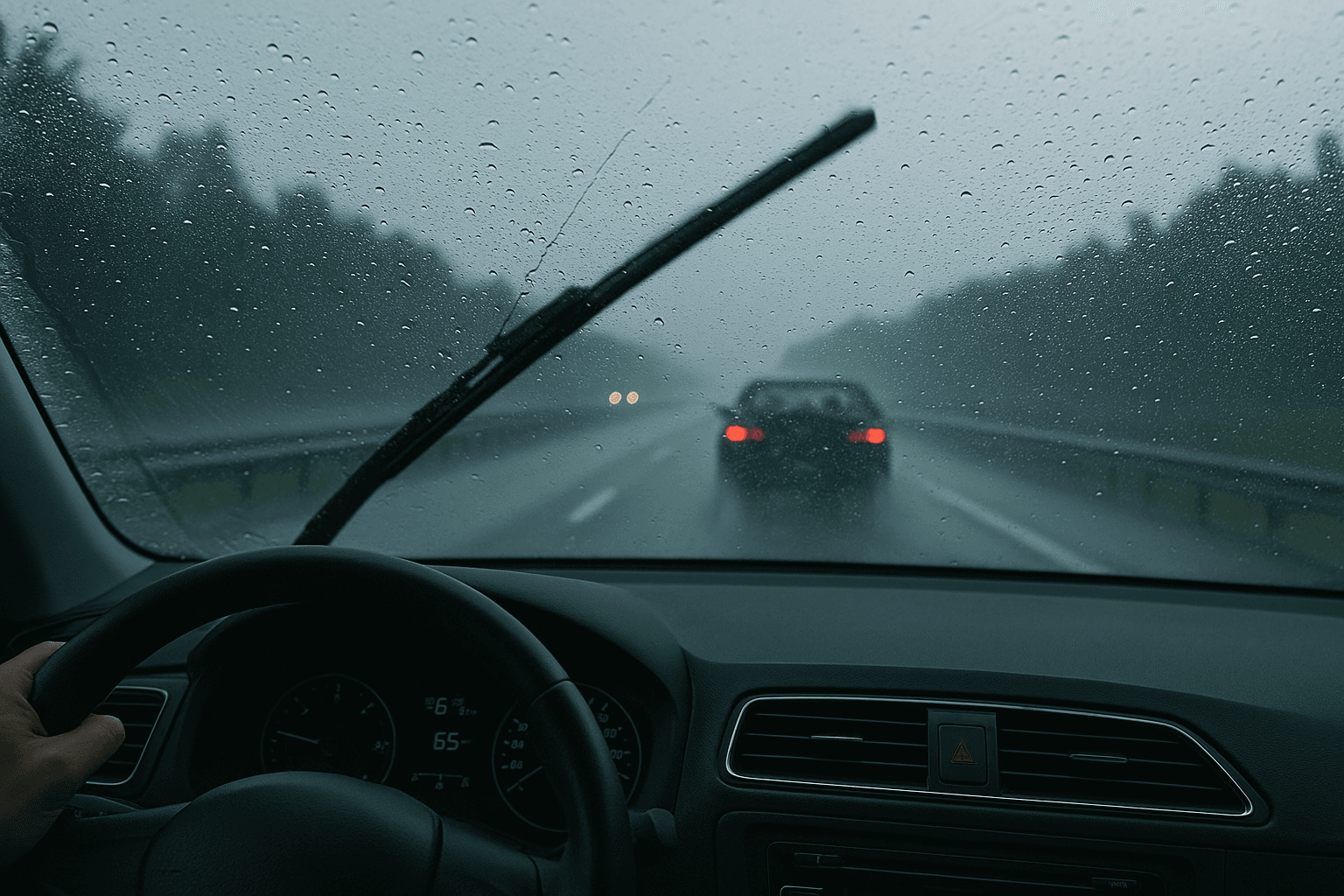Rain can turn even a short drive into a challenging task. Reduced visibility, slick pavement, and unpredictable conditions all contribute to increased accident risk. Whether it’s a light drizzle or a heavy downpour, knowing how to adapt your driving can help you stay safe on the road.
Slow Down and Increase Following Distance
One of the simplest and most effective ways to stay safe in the rain is to reduce your speed. Wet roads reduce tire traction, making it easier to hydroplane and harder to stop. Slowing down allows your tires to maintain better contact with the road and gives you more time to react. It’s also important to increase your following distance—give the car ahead at least five seconds of space.
Turn on Your Headlights
Many states require headlights to be on when windshield wipers are in use. Even if it’s daytime, turning on your headlights helps improve visibility—not just for you, but so other drivers can see your vehicle more clearly. Avoid using high beams in heavy rain, as they can reflect off the water and reduce visibility.
Avoid Sudden Movements
In rainy conditions, sudden braking, sharp turns, or quick acceleration can cause your tires to lose grip. Drive with smooth, gradual movements. If you need to slow down, ease off the accelerator and gently apply the brakes. When turning, reduce your speed before entering the curve.
Watch for Standing Water
Puddles may seem harmless, but they can hide deep potholes or cause your vehicle to hydroplane. If you can’t avoid driving through standing water, proceed slowly and steadily. If your vehicle begins to hydroplane, remain calm—ease off the gas, avoid braking suddenly, and steer gently in the direction you want to go until you regain control.
Keep Your Car Maintained
Rainy conditions highlight the importance of vehicle maintenance. Ensure your tires have sufficient tread depth to grip wet roads, and check your wiper blades regularly for streaking or skipping. A well-functioning defogger and clean windshield also help maintain clear visibility.
Use Extra Caution at Intersections
Rain can lift oil and debris to the surface, especially at intersections where vehicles stop frequently. Brake earlier than usual and approach stoplights and signs with extra care. Even familiar routes can become dangerous when the road surface changes under wet conditions.
Stay Focused and Avoid Distractions
Rain demands your full attention. Turn down the music, avoid phone use, and stay alert to other drivers who may not be as cautious. Keep both hands on the wheel and scan your surroundings for brake lights, road hazards, and changes in traffic flow.
Know When to Pull Over
Sometimes, the safest decision is to wait it out. If the rain is so heavy that you can’t see the road, your mirrors, or other vehicles, find a safe place to pull over—preferably a rest area or parking lot. Turn on your hazard lights so other drivers know you’re stopped.


